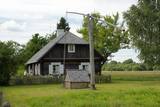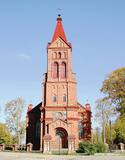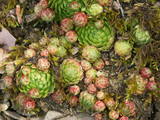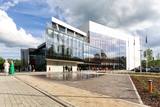| Nr | Nosaukums | Apraksts |
|---|---|---|
|
This tour offers seeing the capital cities and most attractive towns of Lithuania, Latvia and Estonia through the freedom of independent travel and using public train and bus services. Getting around in cities and towns is easy, either by walking, or by using local public transport or taxis. The Old Town of Vilnius is in the UNESCO World's Cultural Heritage list. Daugavpils Fortress and the museum of Mark Rothko, the world famous abstractionist, are two highlights of Daugavpils city, Rēzekne city is known as the heart of Latgale region. Riga, the capital city of Latvia, offers a variety of cultural experiences and entertainment. Sigulda is famous for its landscapes and medieval castles. Cēsis is one of the most charming towns in Latvia with many attractions ranging from medieval heritage to nice restaurants, exhibitions and festivals. Valmiera offers art galleries, museums, nature trails and Valmiermuža beer from the famous local brewery. Tartu in Estonia is a university town, with some very popular tourist attractions such as the interactive AHHAA science centre, the largest in Baltic countries. Narva is a border town overlooking the Ivangorod fortress in Russia across the river Narva. Finish the tour in Tallinn – the capital city of Estonia. Tourist information centres in cities and towns will help you with maps, information on sights, attractions and guided tours, food, shopping and public transport. |
||
|
This is an activity-packed, family-oriented tour. Planned activities are cycling, walking and canoeing. After exploring Riga' s Old Town and parks, you stop at the Open-Air Ethnographic Museum which gives a hands-on insight into ancient Latvian life and architecture. At Sigulda, the walking starts from romantic medieval Sigulda castle ruins and continues along the Gauja river valley to Turaida Museum Reserve with its medieval castle, viewing tower, traditional estate buildings, and working smithy where forging coins is always fun. A exciting canoeing trip from Cēsis goes along several picturesque riverside cliffs and gentle rapids, finishing at the old-fashioned wire ferry at Līgatne which still operates every day using just the power of the river flow. While at Līgatne, walk along nature trails that introduce local wild animals in large enclosures with wild boar, bears, lynx, wolves and more. A 'Time Travel' experience offers an excursion to a former Soviet top secret nuclear bunker, while exploring medieval Cesis and its Livonan Order Castle by lamplight will give another historical insight. |
||
|
Daugavas aizsargdambju būvniecību Jēkabpilī uzsāka pēc 1981. gada lielajiem paliem, kad ūdens līmenis pārsniedza kritisko - 6,3 m atzīmi un pakāpās līdz rādījumam „8,7 metri”. Šo plūdu laikā puse pilsētas klāja Daugavas ūdeņi. 2011. gada vasarā notika plašāki dambja atjaunošanas un labiekārtošanas darbi. Pie tā uzstādīja laternas, soliņus, izveidoja pastaigu promenādi un piemiņas zīmi Daugavas kreisajā krastā, kas parāda maksimālo plūdu līmeni. Uz aizsargdambja Daugavas labajā krastā ir izvietoti informatīvie stendi, kur var uzzināt daudz interesantus faktus par pilsētas vēsturi. Dambji ir piemērota vieta, kur fotografēt vai gleznot pilsētas ainavas. |
||
|
Dzejnieka Jona Mačuļa – Mairoņa (1862 – 1932) tēvzeme un dzimtene – Pasandravjo vēsturiskais liegums Pagojuku apkaimē, Pasandravjo un Bernotu ciemi, Raseinu novada vēstures muzeja filiāle. Liegums ir Dubisos reģionālā parka daļa. |
||
|
Celts uz bijušā kolhoza stāvlaukuma Dunduru pļavu rietumu pusē. No torņa otrā stāva lieliski pārskatāms viss pļavu masīvs līdz pat Džūkstes upei un Kauguru kanālam. Redzami arī dzīvei savvaļā pielāgotie mājlopi, pat, ja tie atrodas visattālākajā vietā. Putnu vērošanas vieta no pavasara līdz vasaras otrai pusei. |
||
|
Savā ziņā unikāls un Baltijas valstīs vienīgais šāda veida 17. - 18. gs. mazpilsētas apbūves komplekss, kas izvietojies mazās Alekšupītes krastos. Dažviet upīte tek gar ēku sienām. Šī pilsētvide ar tiltiņiem radījusi apzīmējumu – „Latvijas Venēcija”. Interesantiem kultūras pieminekļiem bagātas ir Baznīcas, Liepājas, Kalna u.c. ielas. |
||
|
Ciskādu Sv. Jāņa Kristītāja Romas katoļu baznīca uzbūvēta ap 1900. gadu
no akmens un sarkanķieģeļiem romāņu stilā, ievērojama ar gleznu „Madonna
ar bērnu’’, krucifiksu un ērģelēm.
|
||
|
Šis maršruts ir izveidots, lai parādītu Latvijas rudzu maizes cepšanas tradīcijas. Maršruts izstrādāts sadarbībā ar Latvijas Maiznieku biedrību. Rudzi ir gan latviešu uztura pamats, gan spēcīgs Latvijas kultūras un kulinārijas tradīciju simbols. Maršrutā akcentēta tradicionālā rudzu maizes cepšana un ēšana, kā arī sniegts ieskats rudzu graudu vēsturē no Latvijas senākajiem arheoloģiskajiem laikiem līdz mūsdienām. Maršrutā ietilpst saimniecību, graudu ražotņu un kultūrvēsturiski nozīmīgu vietu apmeklējumi. Tūre ir paredzēta grupām, un to ir iespējams pielāgot katram klientam, ņemot vērā viņa vēlmes, vajadzības un atvēlēto laiku. Tūrēs iekļauts: tikšanās ar ekspertiem, apmeklējumi, tūrisma pakalpojumi - naktsmītnes, ēdināšana, apskates vietas, autobusu īre, gidi. |
||
|
Neliels Daugavas ielejas posms starp Lielvārdi un Dzelmēm ar salām un sēkļiem Daugavā, kā arī niedrājiem un mitrajām pļavām, kas migrāciju laikā piesaista daudzus zosveidīgos un tārtiņveidīgos putnus kā atpūtas un barošanās vieta. Arī nozīmīga dažu sugu ligzdošanas vieta. Daugavas ziemeļu krastā vietumis ir nelieli dolomīta atsegumi ar tiem raksturīgām augu sugām. Teritorija nav labiekārtota, tādēļ vasaras laikā piemērots apskates veids ir brauciens ar laivu pa Daugavu.
|
||
|
The farm on the banks of the River Navesti is Estonia's largest company engaged in the cultivation and processing of organic medicinal herbs. The farm has an education and health path of medicinal herbs, open from May to September. Farm has a tea house completed in 2010 which is suitable for holding seminars, relaxing and in the summertime also for having meals. Herb presentations are held there - first on the field and then in the tea house. There is also a 13-metre viewing tower by the river from which you can get a good overview of the lands of the farm. Energy Farm also offers accomodation and Eco-Spa with sauna. |
||
|
Latgales vēstniecība GORS atrodas Latgales sirdī – Rēzeknē. Tā ir vieta, kur vienkopus rada un vēsta Latgales stāstu. Te satek kultūras mantojums un senas vērtības, tradīcijas un jaunrade, valoda un notikumi, nozīmīgākās pasaules tendences, māksla, kultūra, dejas un dziesmas. Kultūras centrs, koncertzāles, kino, dzīves vieta māksliniekiem, izstāžu vieta mākslai, restorāns dzīves baudīšanai, vieta eksperimentiem ar visām maņām. Informācijas centra un biļešu kases darbalaiks: Pirmdiena–piektdiena: 12.00–18.00 Sestdiena, svētdiena: 12.00–16.00 Pārtraukums: 15.00–15.30 Pasākuma dienā līdz pasākuma beigām vai, ja pasākums divās daļās, līdz otrās daļas sākumam. Mākslas galerijas darbalaiks: Katru dienu: 12.00–18.00 Kafejnīca "Zīds" nodrošina individuālu viesu un grupu ēdināšanu ikdienā, svētkos, kā arī apkalpošanu semināros un banketos, kas notiek Latgales vēstniecībā GORS. |
||
|
Viesu nams "Stikāni" atrodas 2km no Nagļiem, pašā Orenīšu dīķu krastā. Viesu namā atrodas 4 labiekārtoti, komfortabli divvietīgi numuriņi un ēdamistaba ar izeju uz dārza terasi. Viesi var pasūtīt ēdināšanas pakalpojumus vai arī gatavot paši - virtuvē ir viss nepieciešamais aprīkojums. Blakus ēkā atrodas dabas tūrisma informācijas centrs, kurā ceļotāji var pieteikties putnu vērošanas ekskursijām tuvējā apkaimē. Mājai piederošajā teritorijā ir izveidota dabas taka, kurā zinoša gida pavadībā iespējams iepazīt Latvijai raksturīgos kokus un krūmus, populārus un mazāk zināmus ārstniecības augus un lielu daļu pie mums ligzdojošo putnu (vasarā) vai arī vērot iespaidīgu putnu migrāciju pavasaros un rudeņos. Dārzā putnus var vērot arī no speciāla slēpņa. |
||
|
Taka iepazīstina ar Rīgas teritorijā esošo dabas lieguma zonu, kas veidota jūras piekrastes biotopu (meži, pļavas, niedrāji, kāpas) un Daugavgrīvas pļavās dzīvojošo putnu aizsardzībai. Daugavgrīva labi pārskatāma no putnu vērošanas torņa, kas pielāgots cilvēkiem ar īpašām vajadzībām. |
||
|
Redzamas pa lielu gabalu Vecumnieku – Skaistkalnes un Stelpes ceļu krustojuma tuvumā. Šīs Holdandes tipa vējdzirnavas uzcēla 1903. gadā. Sākot ar 20. gs. 30. gadiem dzirnavas darbojas ar elektrības palīdzību. Līdz mūsdienām ir saglabājušies vējdzirnavu vēsturiskie mehānismi. Kādreiz daudzie vējdzirnavu stāvi bija raksturīga Zemgales vēsturiskajam novadam, ko pamatoti dēvē par Latvijas „maizes klēti”. Diemžēl līdz mūsdienām ir saglabājušies tikai daži. Šīs vējdzirnavas ir apskatāmas tikai no ceļa malas.Ap 8 km rietumos (Iecavas virziens) redzamas vēl vienas – Kāravu vējdzirnavas. |
||
|
„Lapių slėnio” saimniecībā tiek audzēti dažādi dzīvnieki – vēsturiskā portugāļu zirgu šķirne „Lusitano”, Šetlandes poniji, citi karstasiņu Eiropas zirgi, „Ango Nubian” šķirnes kazas, Lietuvas genofonda asās vilnas aitas un liels pulks dažādu mājas putnu. Saimnieki apmeklētājiem stāsta par dzīvnieku šķirnēm, to izcelsmi, aicina jāt ar zirgiem un ponijiem, kā arī vērot dzīvniekus. |
||
|
Studijā iespējams pirkt un pasūtīt dažādus daiļamatniecības izstrādājumus, kā arī iepazīt daiļamatniecības darba procesu. Studijā nodarbojas ar tautas tērpu darināšanu, aušanu un visu veidu rokdarbiem, rotu darināšanu, tekstilmozaīku, šūšanu un zīda apgleznošanu. Pieejama darinājumu ekspozīcija un suvenīri. |
||
|
"Skrīveru saldumi" ir ģimenes uzņēmums, kas jau trešajā paaudzē ražo konfektes "Gotiņa" - gan klasiskās, gan ar dažādām piedevām, kā, piemēram, ar rudzu maizi un dzērvenēm. Tāpat uzņēmums ražo dažādus citus saldumus no šokolādes, žāvētiem augļiem, riekstiem, sēkliņām, sukādēm un citiem vērtīgiem gardumiem. Apmeklētājiem tiek piedāvātas dažādas ekskursijas ar praktisku darbošanas. Viena no tām piedāvā piedalīties "Skrīveru Gotiņas" ekspedīcijā ar iespēju pašiem ietīt savas konfektes, iepazīties ar konfekšu tapšanas vēsturi, nodegustēt produkciju, kā arī iegādāties uzņēmuma produkciju ražotnes veikaliņā. Visas ekskursijas piemērotas gan bērniem, gan pieaugušajiem. |
||
|
Atrodas Cēsu rietumdaļā – pie ceļa, kas ved uz Cīrulīšiem. Piedāvājumā – plašs ēdienu klāsts no brokastīm līdz vakariņām. |
||
|
Būvēts 1929.
gadā. Tornī savulaik glabājās dzeramā un
minerālūdens krājumi. Līdz 2. Pasaules karam
kūrorta viesi no torņa galā ierīkotā skatu
laukuma 42 m augstumā varēja aplūkot
Ķemeru apkārtni.
|
||
|
Latvijas katolicisma centrs un pasaules nozīmes svētvieta. Tās pirmsākumi meklējami 1699. g., kad dominikāņu ordenis nodibina klosteri, bet gadu vēlāk uzceļ pirmo koka baznīcu. 1768. - 1800. g. top mūsdienās redzamā Sv. Dominika mūra baznīca un klostera ēkas. Baroka stilā celtais dievnams izceļas ar diviem 60 m augstiem torņiem. Kancele, ērģeļu prospekts, ērģeles, biktssols un soli ir darināti 18. gs., sānu altāri - 19. gs. sākumā. Centrālajā altārī atrodas glezna “Aglonas Brīnumdarītāja Dievmāte” (17. gs.), kam piedēvētas dziednieciskas īpašības, tādēļ to atklāj tikai nozīmīgāko pasākumu laikā. Pirms Romas pāvesta Jāņa Pāvila II vizītes Latvijā (1993. g.) tika veikti lieli kompleksa pārbūves un restaurācijas darbi. 15. augustā Aglonā ierodas svētceļnieki, lai atzīmētu Jaunavas Marijas debesīs uzņemšanas dienu. 0,1 km no bazilikas atrodas Aglonas Svētavots. |
||




























